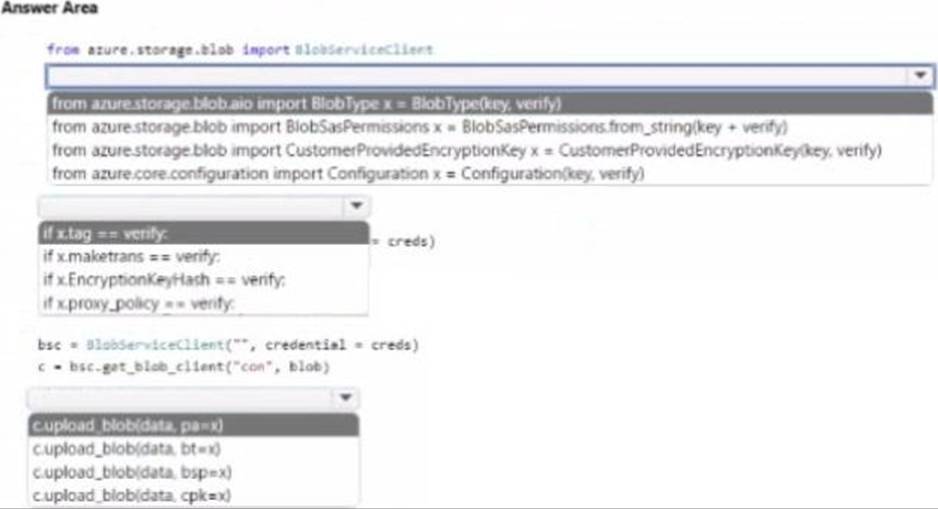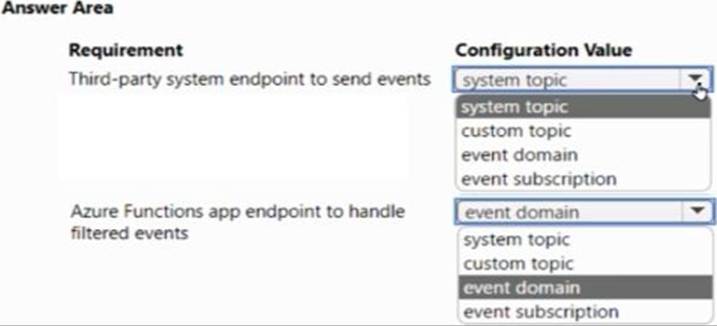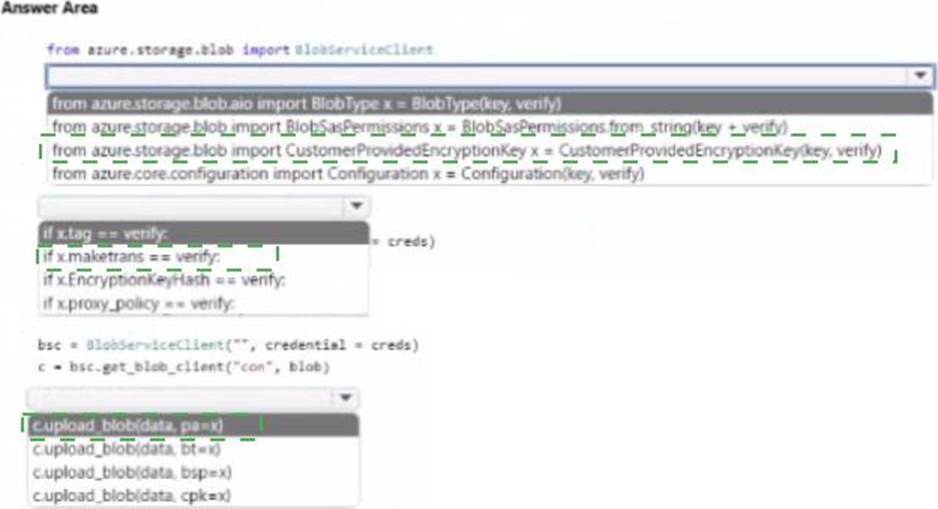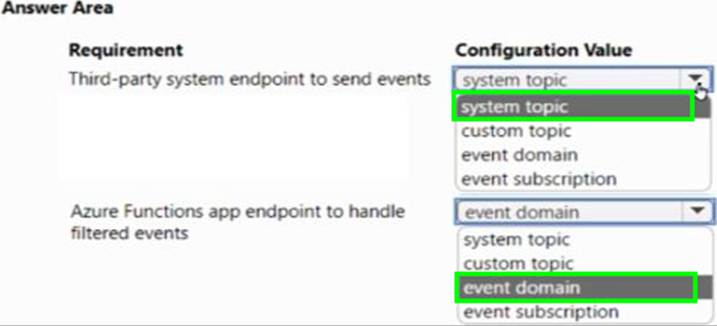Practice Free AZ-204 Exam Online Questions
A development team is creating a new REST API. The API will store data in Azure Blob storage. You plan to deploy the API to Azure App Service.
Developers must access the Azure Blob storage account to develop the API for the next two months. The Azure Blob storage account must not be accessible by the developers after the two-month time period.
You need to grant developers access to the Azure Blob storage account.
What should you do?
- A . Generate a shared access signature (SAS) for the Azure Blob storage account and provide the SAS to all developers.
- B . Create and apply a new lifecycle management policy to include a last accessed date value. Apply the policy to the Azure Blob storage account.
- C . Provide all developers with the access key for the Azure Blob storage account. Update the API to include the Coordinated Universal Time (UTC) timestamp for the request header.
- D . Grant all developers access to the Azure Blob storage account by assigning role-based access control (RBAC) roles.
You need to investigate the http server log output to resolve the issue with the ContentUploadService.
Which command should you use first?
- A . az webapp log
- B . az ams live-output
- C . az monitor activity-log
- D . az container attach
HOTSPOT
You are building an application that stores sensitive customer data in Azure Blob storage. The data must be encrypted with a key that is unique for each customer.
If the encryption key has been corrupted it must not be used for encryption.
You need to ensure that the blob is encrypted.
How should you complete the code segment? To answer, select the appropriate options in the answer area. NOTE: Each correct selection is worth one point.

DRAG DROP
You are developing a new page for a website that uses Azure Cosmos DB for data storage.
The feature uses documents that have the following format:

You must display data for the new page in a specific order.
You create the following query for the page:

You need to configure a Cosmos DB policy to the support the query.
How should you configure the policy? To answer, drag the appropriate JSON segments to the correct locations. Each JSON segment may be used once, more than once, or not at all. You may need to drag the split bar between panes or scroll to view content. NOTE: Each correct selection is worth one point.

Note: This question is part of a series of questions that present the same scenario. Each question in the series contains a unique solution that might meet the stated goals. Some question sets might have more than one correct solution, while others might not have a correct solution.
After you answer a question in this section, you will NOT be able to return to it. As a result, these questions will not appear in the review screen.
You are developing an Azure solution to collect point-of-sale (POS) device data from 2,000 stores located throughout the world. A single device can produce 2 megabytes (MB) of data every 24 hours. Each store location has one to five devices that send data.
You must store the device data in Azure Blob storage. Device data must be correlated based on a device identifier. Additional stores are expected to open in the future.
You need to implement a solution to receive the device data.
Solution: Provision an Azure Service Bus. Configure a topic to receive the device data by using a correlation filter.
Does the solution meet the goal?
- A . Yes
- B . No
Note: This question is part of a series of questions that present the same scenario. Each question in the series contains a unique solution that might meet the stated goals. Some question sets might have more than one correct solution, while others might not have a correct solution.
After you answer a question in this section, you will NOT be able to return to it. As a result, these questions will not appear in the review screen.
You are developing an Azure solution to collect point-of-sale (POS) device data from 2,000 stores located throughout the world. A single device can produce 2 megabytes (MB) of data every 24 hours. Each store location has one to five devices that send data.
You must store the device data in Azure Blob storage. Device data must be correlated based on a device identifier. Additional stores are expected to open in the future.
You need to implement a solution to receive the device data.
Solution: Provision an Azure Service Bus. Configure a topic to receive the device data by using a correlation filter.
Does the solution meet the goal?
- A . Yes
- B . No
HOTSPOT
You develop several Azure Grid to include hundreds of event types, such as billing, inventory, and shipping updates.
Events must be sent to a single endpoint for the Azure Functions app to process. The events must be filtered by event type before processing. You must have authorization and authentication control to partition your tenants to receive the event data.
You need to configure Azure Event Grid.
Which configuration should you use? To answer, select the appropriate values in the answer area. NOTE: Each correct selection is worth one point.

An organization deploys Azure Cosmos DB.
You need to ensure that the index is updated as items are created, updated, or deleted.
What should you do?
- A . Set the value of the EnableScanlnQuery option to True.
- B . Set the indexing mode to Consistent.
- C . Set the indexing mode to Lazy.
- D . Set the value of the automatic property of the indexing policy to False.
You need to secure the Azure Functions to meet the security requirements.
Which two actions should you perform? Each correct answer presents part of the solution NOTE: Each correct selection is worth one point.
- A . Store the RSA-HSM key in Azure Key Vault with soft-delete and purge-protection features enabled
- B . Store the RSA-HSM key in Azure Blob storage with an immutability policy applied to the container.
- C . Store the RSA-HSM key in Azure Cosmos DB. Apply the built-in policies for customer-managed Keys and allowed locations
- D . Create a standard tier Azure App Configuration instance with an assigned Azure AD managed identity.
- E . Create a free tier Azure App Configuration instance with a new Azure AD service principal.
Note: This question is part of a series of questions that present the same scenario. Each question in
the series contains a unique solution that might meet the stated goals. Some question sets might have more than one correct solution, while others might not have a correct solution.
After you answer a question in this section, you will NOT be able to return to it. As a result, these questions will not appear on the review screen.
You are implementing an application by using Azure Event Grid to push near-real-time information to customers.
You have the following requirements:
• You must send events to thousands of customers that include hundreds of various event types.
• The events must be filtered by event type before processing.
• Authentication and authorization must be handled by using Microsoft Entra ID.
• The events must be published to a single endpoint.
You need to implement Azure Event Gnd.
Solution: Publish events to a custom topic. Create an event subscription for each customer.
Does the solution meet the goal?
- A . Yes
- B . No



